27 Things You Didn’t Know About Bananas

The grocery-store staple known as the banana is not as unassuming as one might imagine. This fruit — well, more specifically, this berry — is an everyday item that’s surprisingly versatile (it even makes great ice cream) and is definitely worth a few minutes of thought. Read on as we explore some facts and facets of the banana, from history to trivia, and even offer a recipe or two.
Related: Facts About Apples That Will Take You by Surprise
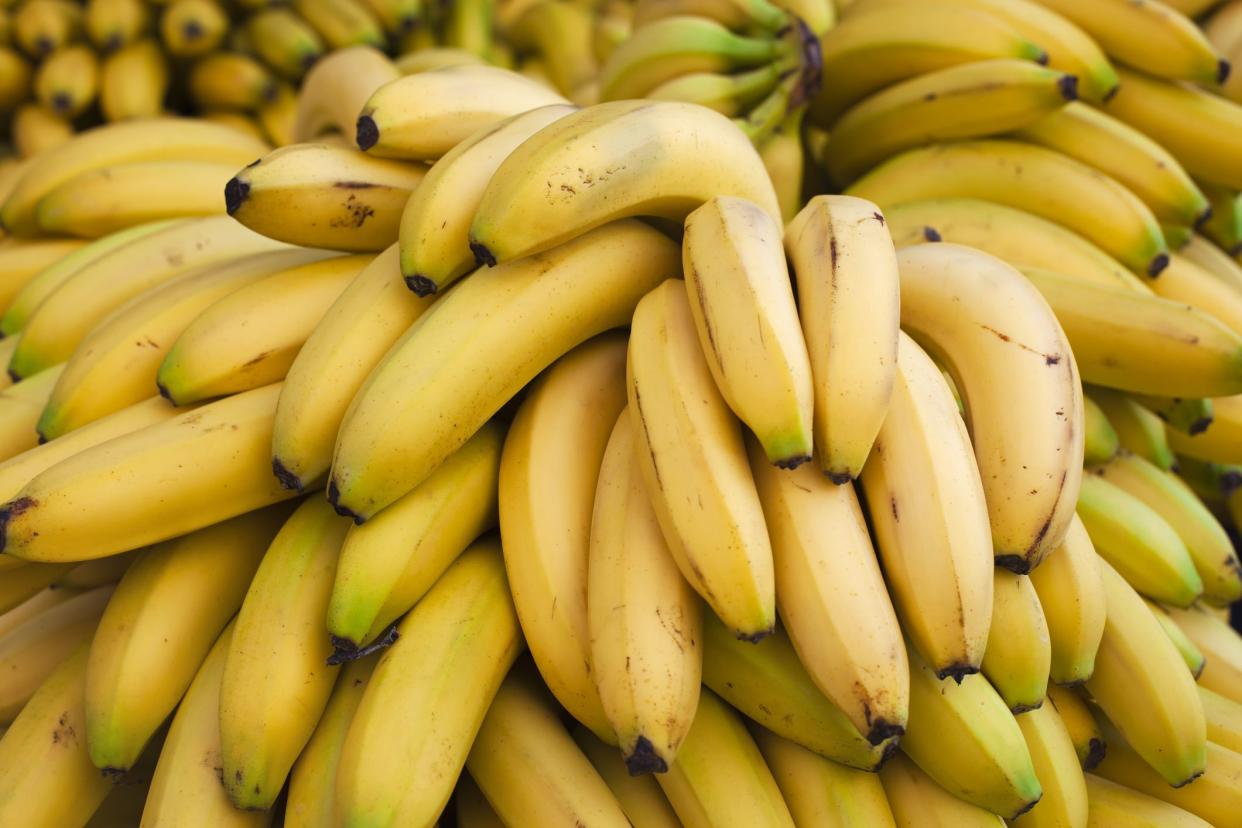
The Australian Banana Growers’ Council shares that bananas have been around for some 10,000 years and some scientists believe they may have been the world’s first fruit. Those first bananas are from the region that includes the Malay Peninsula, Indonesia, the Philippines, and New Guinea.
Related: 30 Easy Frozen Desserts

Travelers, it’s believed, took bananas with them as they went to India, Africa, and Polynesia, according to the Australian Banana Growers’ Council. References appear around 600 B.C. in Buddhist scriptures, which noted the banana was brought to the Malaysian region from India. Alexander the Great and his army invaded India in 327 B.C., discovering the country’s banana crop there, tasting it, and then bringing it to the Western world. It would eventually make its way to China, as well.
For more fun food trivia, please sign up for our free newsletters.

Those early bananas were not the same as those we enjoy today. The original fruit, found in the wild, was full of large and hard seeds and lacked the pulp that we today associate with the banana. The banana we know today began to be developed in Africa around 650 A.D., with a crossbreeding of two varieties of wild bananas.
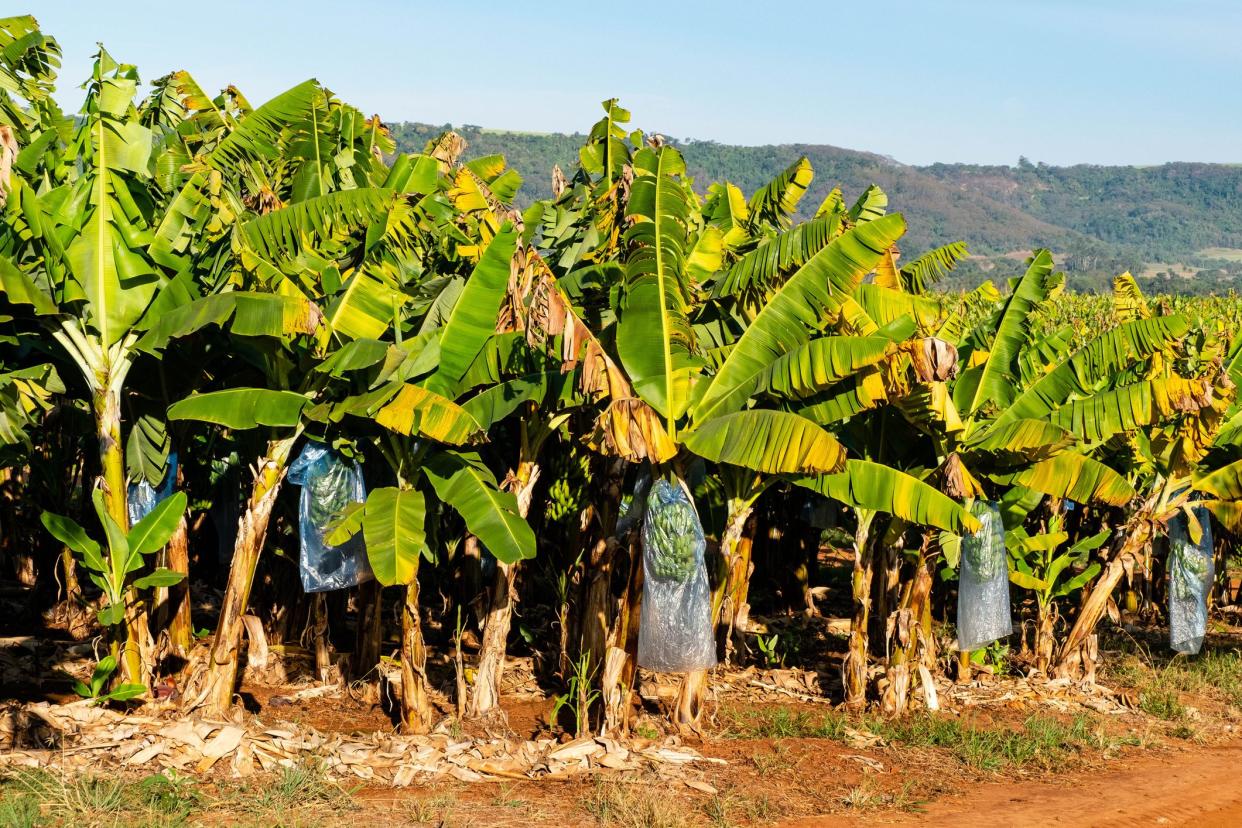
Banana plants might look like trees but “are actually giant herbs related to lilies and orchids. The plant grows from a root clump (rhizome), similar to a tulip bulb,” according to the Rainforest Alliance. The banana plant’s scientific name is Musa.

Banana plants grow quickly, the Rainforest Alliance shares, reaching full height (from 20 to 40 feet) in nine months, then growing another six to eight months as the plant develops a crown of leaves that yields a flowering stem followed by a large bud. “As the bud unfolds, it reveals double rows of tiny flowers. Each of these flowers will become an individual banana, or a ‘finger.’ Each row of bananas is called a ‘hand’ and is made up of 14 to 20 fingers. Each stem grows 9 to 12 hands, which means that a single banana plant can produce up to 240 bananas.”
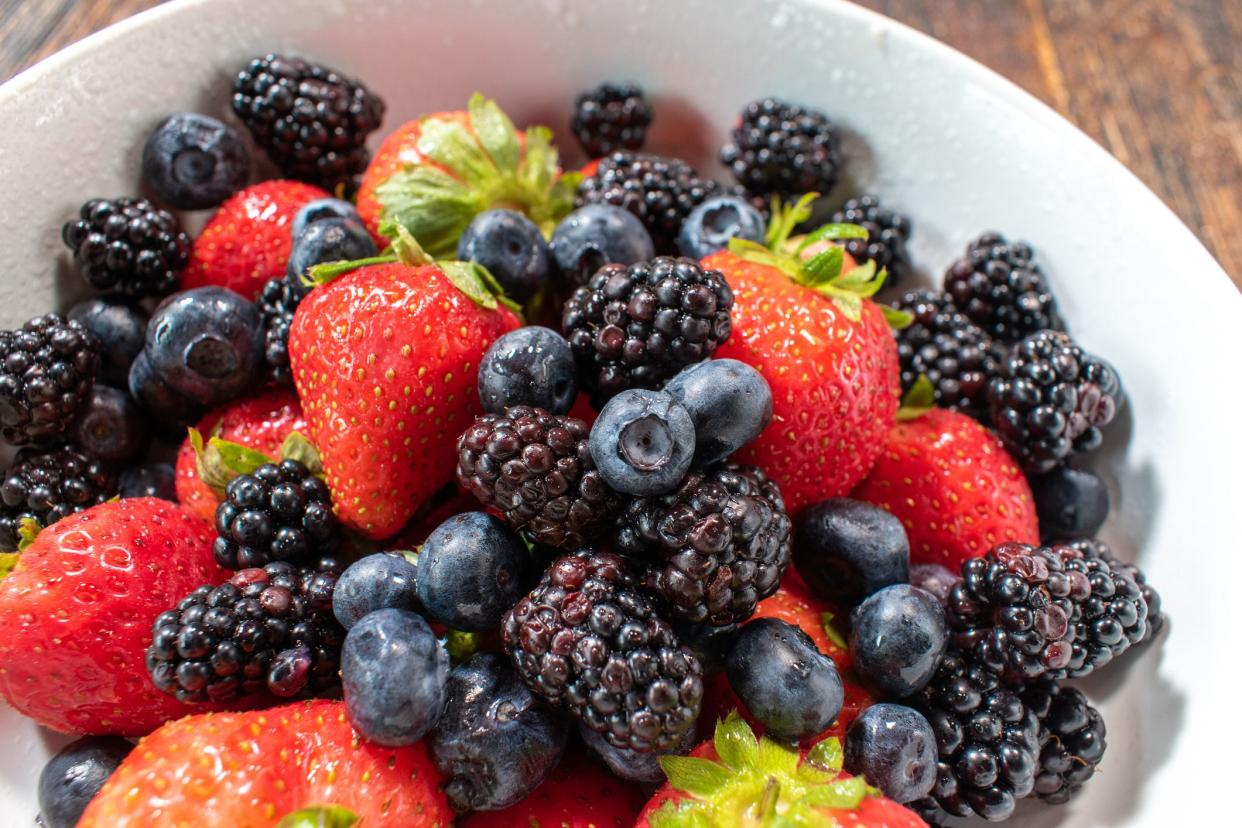
The banana is actually a berry, even though it doesn't resemble what most people think of as a berry. As Healthline notes, “As surprising as this may sound, botanically speaking, bananas are considered berries. The category a fruit falls under is determined by the part of the plant that develops into the fruit.” Another twist: strawberries, blackberries, and raspberries aren't true berries, botanically speaking.

Many of the bananas grown around the world are the red or green variety, including plantains (which are best enjoyed cooked). The yellow banana is known as the Cavendish, which is the most popular type of banana in North America and Europe.

When Americans were introduced to bananas in the 1880s, they were considered an exotic luxury and eaten with a knife and fork. As Edible Arrangements notes, “The most common type of banana you’d find in your local food store is a Cavendish, but it wasn’t always this way. The Gros Michel, also known as Big Mike, was the first type of banana to be cultivated on a large scale. It has a sweeter taste and creamier texture than the banana you know and love. However, a virulent disease devastated the crop. By the 1960s, most commercial operations had stopped producing the Gros Michel and had switched over to the Cavendish.”

Today, the average person in the U.S. eats more than 75 bananas a year. Chiquita, the international producer and distributor of bananas, reports that the banana is the world’s fourth most-important crop, after rice, wheat, and maize.
Related: Cheap and Healthy Breakfast Combinations

The Harvard T.H. Chan School of Public Health notes, “Despite some negative attention, bananas are nutritious and may even carry the title of the first ‘superfood,’ endorsed by the American Medical Association in the early 20th century as a health food for children and a treatment for celiac disease.” The banana is a source of vitamin B6, fiber, potassium, magnesium, vitamin C, and manganese. And, the report adds, “One serving, or one medium ripe banana, provides about 110 calories, 0 gram fat, 1 gram protein, 28 grams carbohydrate, 15 grams sugar (naturally occurring), 3 grams fiber, and 450 mg potassium.”
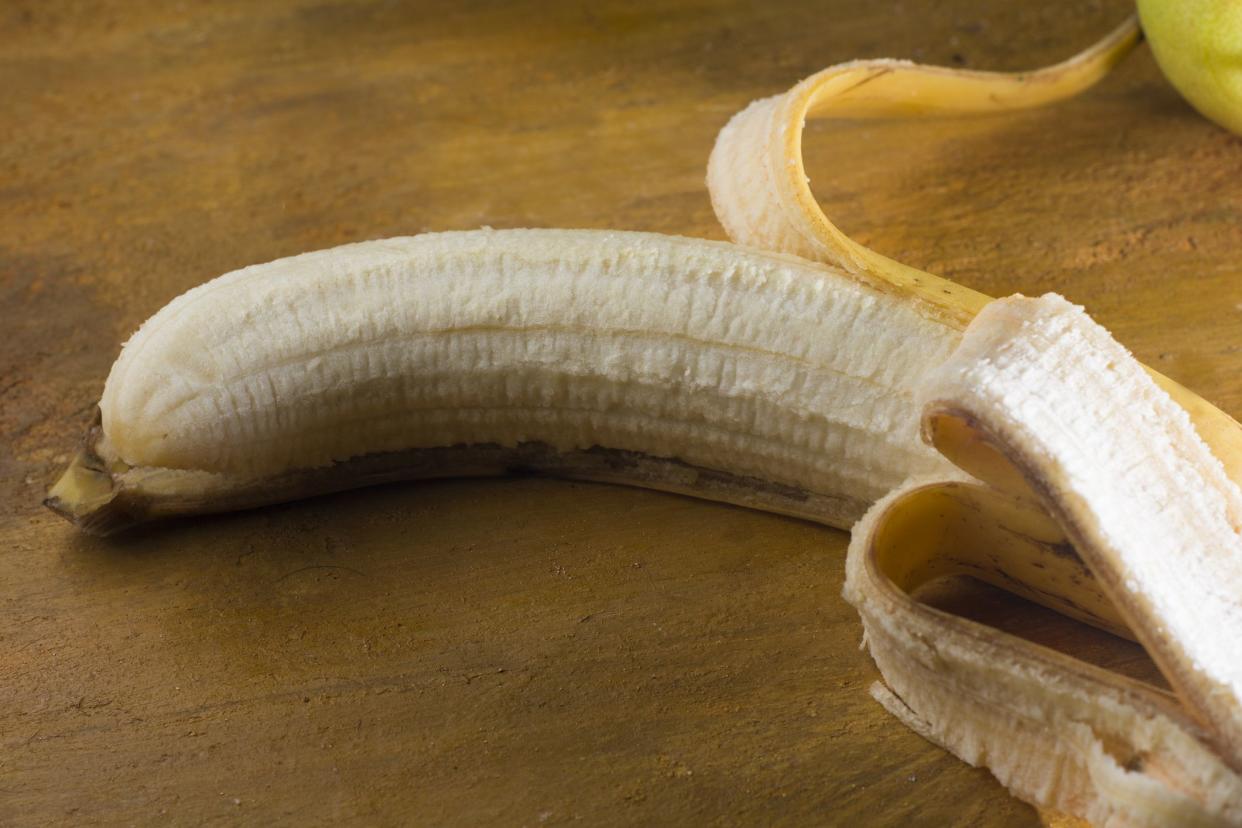
You peel a banana and make every effort to remove those annoying stringy bits. What are they anyway? As Southern Living says, “You may not be familiar with the scientific term, but chances are you know what they are: phloem bundles are those dry, stringy bits when you peel open a banana. Many people throw them away with the skin, but as it turns out, they're actually completely edible — and quite good for you.” Who knew? (I’m still not eating them).

Chiquita recommends numerous tips on how to ripen a banana, from keeping green bananas in a bunch to keeping them in a warm spot to even putting them in a paper bag with another fruit, such as a tomato. “Some fruit (like bananas) give off ethylene gas as they ripen, and ethylene gas helps to convert starch into sugar, so this can also help to ripen the fruit around them.”
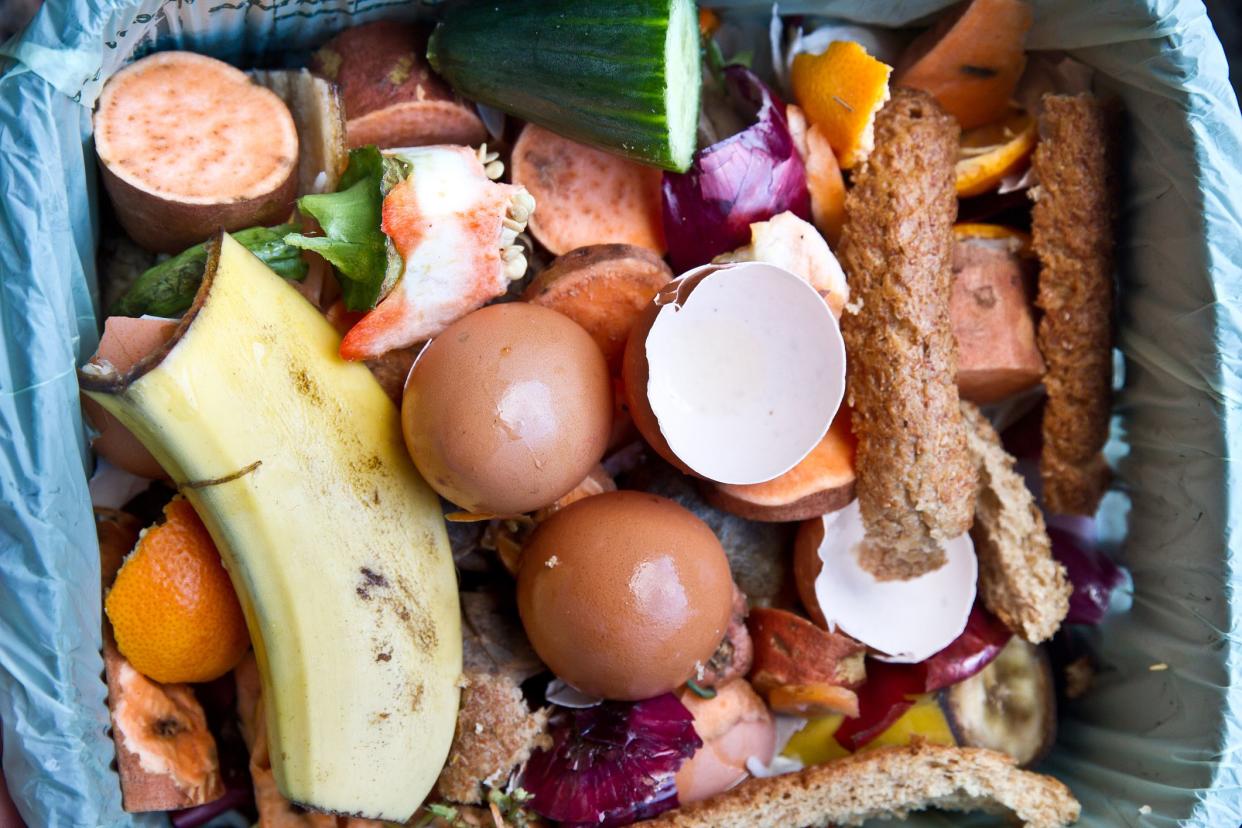
Banana peels are often composted or buried in gardens to add nutritional elements to the soil. Don’t simply toss them in the open, though, as a banana peel isn’t easily biodegradable. It can actually take up to two years for peels to decompose.

If you consider a banana a heavy or rich fruit, consider this: they float. Along with apples and watermelons, bananas will float in a tub of water, according to The Banana Police, a website devoted to a children’s book of the same name by Katy Koontz.

“Some cultures (most notably Japan) use the fiber in the banana plant to make fabric and sometimes even paper,” says The Banana Police. Indeed, bananas may be primarily a food source but its fiber can be used in other ways. As Fashion United reports, banana fiber is a sustainable textile innovation: “Fabrics made from banana fibres are soft and supple, as well as breathable and a natural sorbent. They tend to have a natural shine to them as well and are often compared to silk. In addition, banana fibre is now seen as a sustainable alternative to cotton and silk. Banana fibre, which is said to be nearly carbon neutral, is also often compared to hemp and bamboo, although it is not as durable as the former fibres.”

A monkey eating a banana is a classic image. But backyard animals that will eat bananas are many, including deer, birds, squirrels, raccoons, chipmunks, goats, pigs, horses, and rabbits.
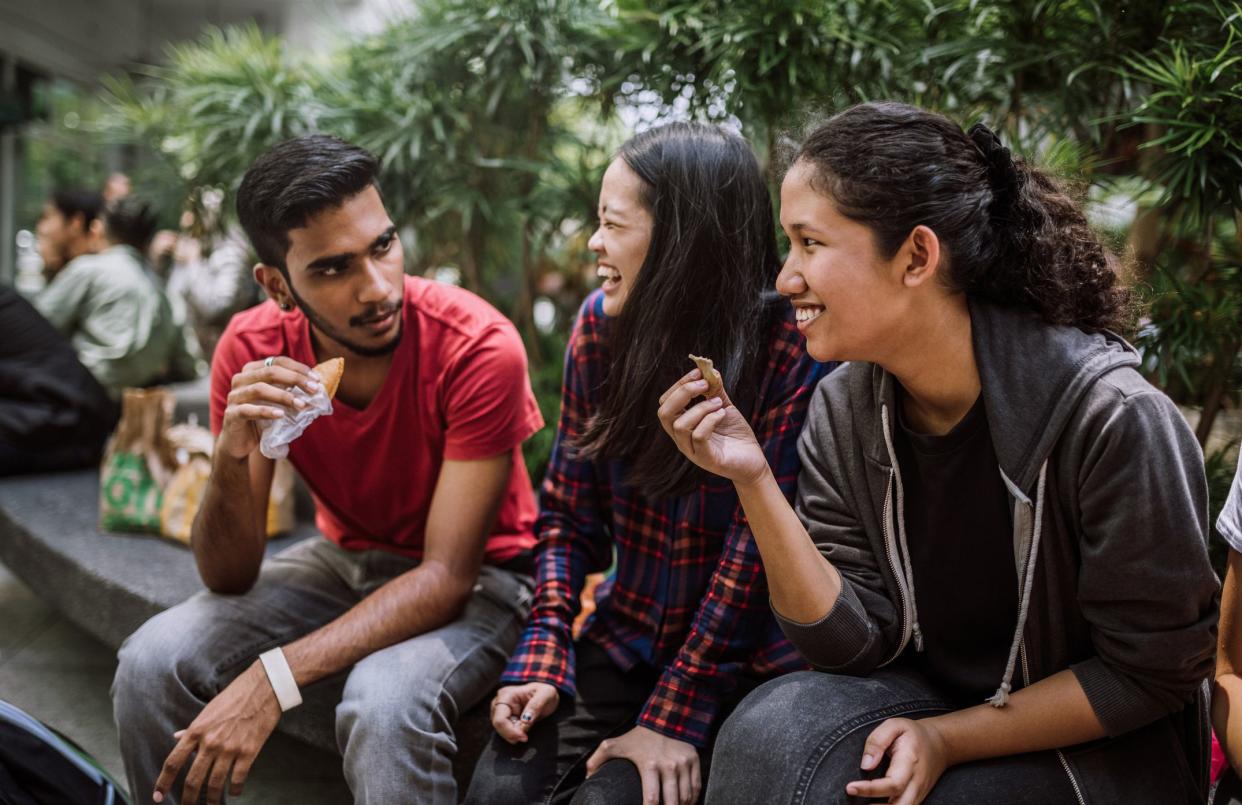
The term bananas seems to have two meanings. The first – and one that’s fallen out of favor – is “bananas” as kind of crazy. Today, it’s more commonly used in a phrase, from “It’s bananas” to “That’s bananas.” It’s also used to connote something really good or cool. Examples include Gwen Stefani’s lyrics in “Hollaback Girl” or the way real-estate star Tracy Tutor drops it often on the reality show “Million Dollar Listings Los Angeles.”
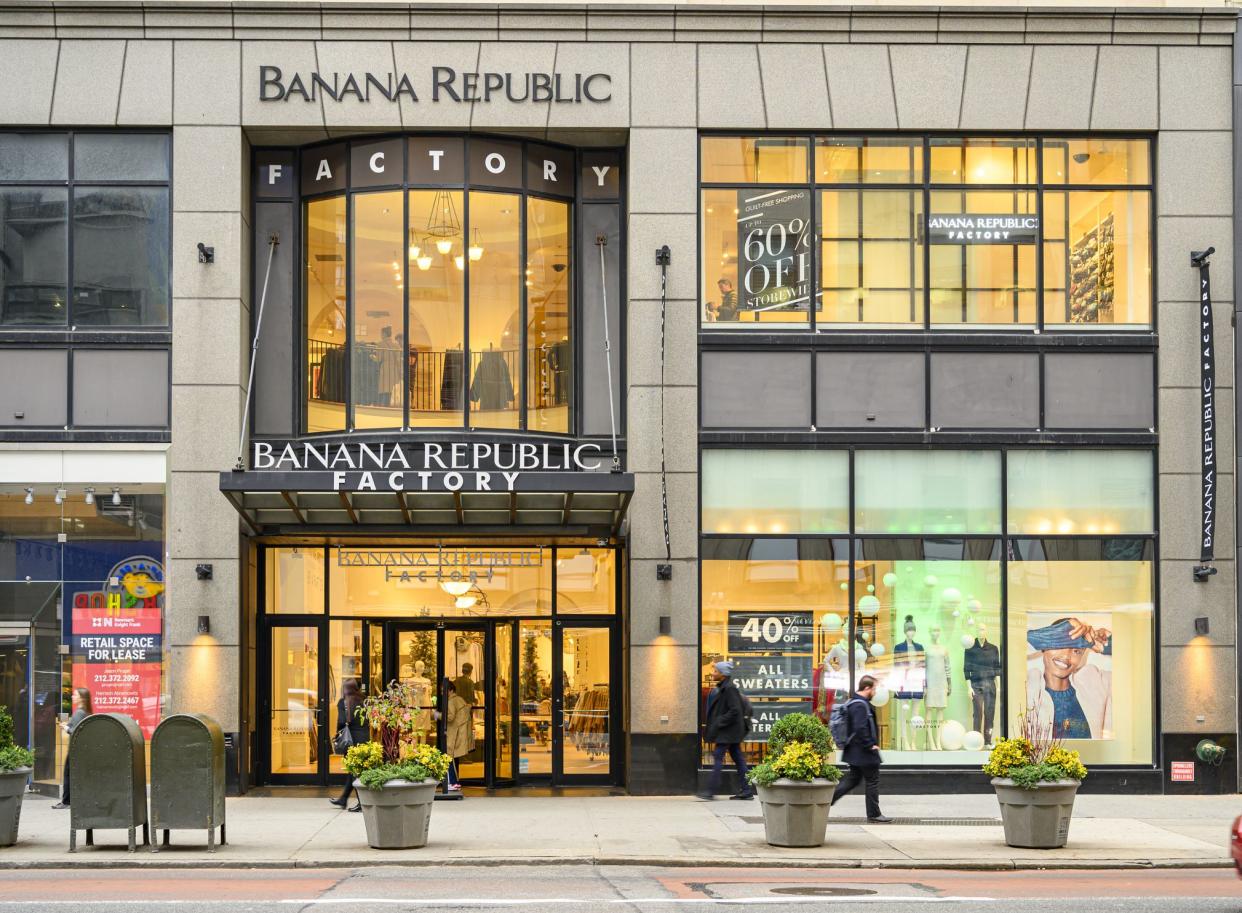
Most young people today know Banana Republic as a clothing brand. The name has been the topic of discussion and unease over the years. (The company founders have repeatedly denied any political meaning). That’s because the term banana republic is not flattering. The term was coined by American writer O. Henry in his short story “The Admiral,” published in 1904. Beginning in the early 20th century, it was used to refer to certain Central American countries, including Honduras and Guatemala, where U.S.-based fruit companies such as the United Fruit Company (now Chiquita Brands International), exerted tremendous influence over politics, while also taking advantage of cheap land and labor for profit.
The term has since been used to more generally describe a country with an unstable political atmosphere, often featuring an economy that depends on the exportation of a single product (such as bananas or minerals). Within that society, there is often exploitation of the local workforce to support the upper classes.

Trending these days are green funerals and natural burials. Helping that approach is the availability of banana-leaf coffins, especially in the United Kingdom. The UK-based Natural Endings Funeral Service notes “these coffins are popular for woodland burial as they are entirely biodegradable and from a sustainable resource.”

Those of most any age are likely familiar with the classic boat-shaped ice-cream sundae known as the Banana Split, which features a whole banana filled with several scoops of ice cream and toppings. But it’s those “of a certain age” who will also remember “The Banana Splits Adventure Hour,” a to-this-day kooky kids program from the late 1960s that featured four animal characters.
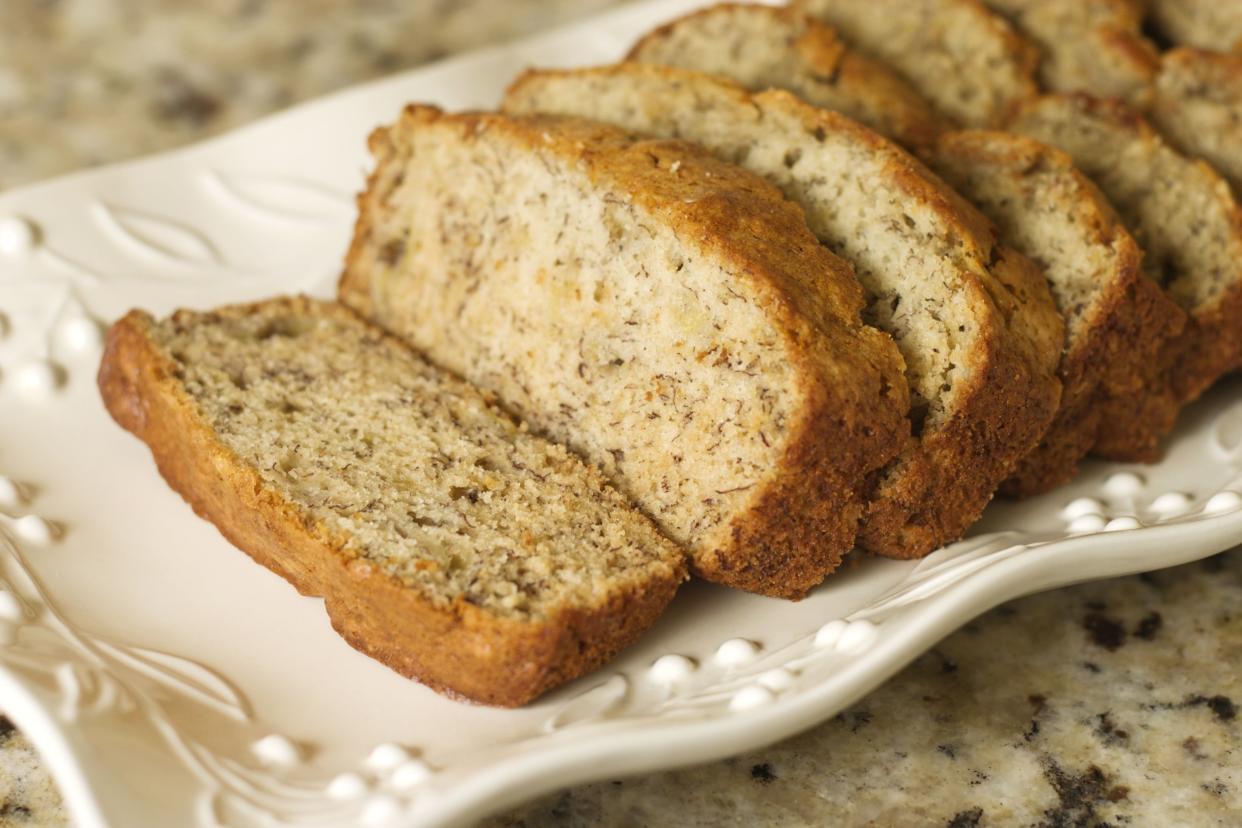
Hands up if you’ve ever used overripe bananas to make banana bread. There are probably as many recipes out there as there are leftover bananas. (A Google search for banana bread recipes yielded 332 million in less than a second, including The Best Banana Bread recipe from The Salty Marshmallow). The banana flavor is also popularly featured in dishes much more elegant (think Bananas Foster in all its rum/cinnamon/sugary richness; Ree Drummond offers a 15-minute version via The Food Network), alcoholic (Banana Daiquiri) and all kinds of candies and treats. A BuzzFeed feature even ranked banana-flavored products, including Runts candies, beer, Twinkies, pudding and yogurt.
Related: Banana Lovers Rejoice: 20 Cheap and Easy Recipes

Okay, we’ll make it brief, but everyone knows the banana has been associated with phallic imagery, with the eating of a banana even sexualized at times — particularly during the Victorian era. It’s even been used to demonstrate how to put on a condom.
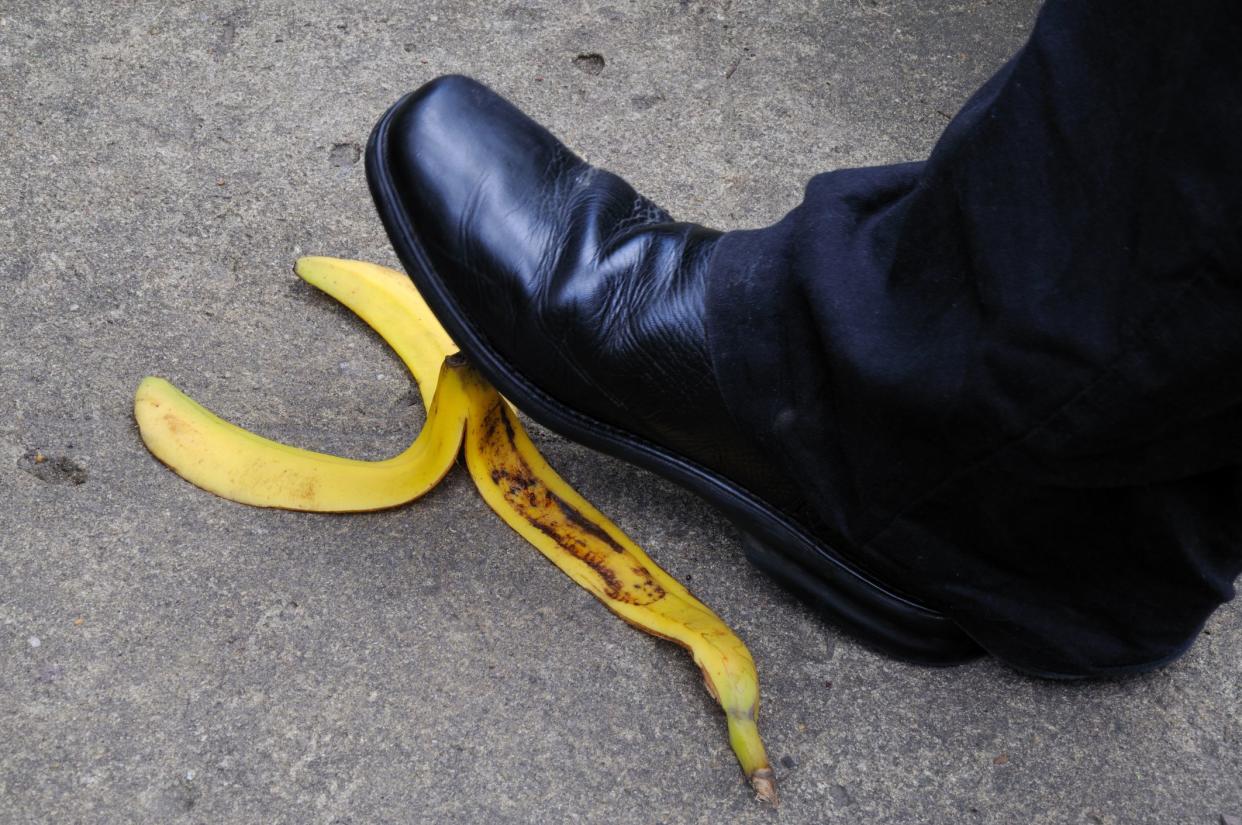
Slipping on a banana peel? It’s a classic comedy scenario, one said to date back to vintage vaudeville days. Banana peels have more use than just making someone laugh. Prevention, for example, has a list of 10 usages for banana peels ranging from helping make a juicier chicken breast to fixing a scratched CD or DVD, soothing a bug bite, or whitening teeth.
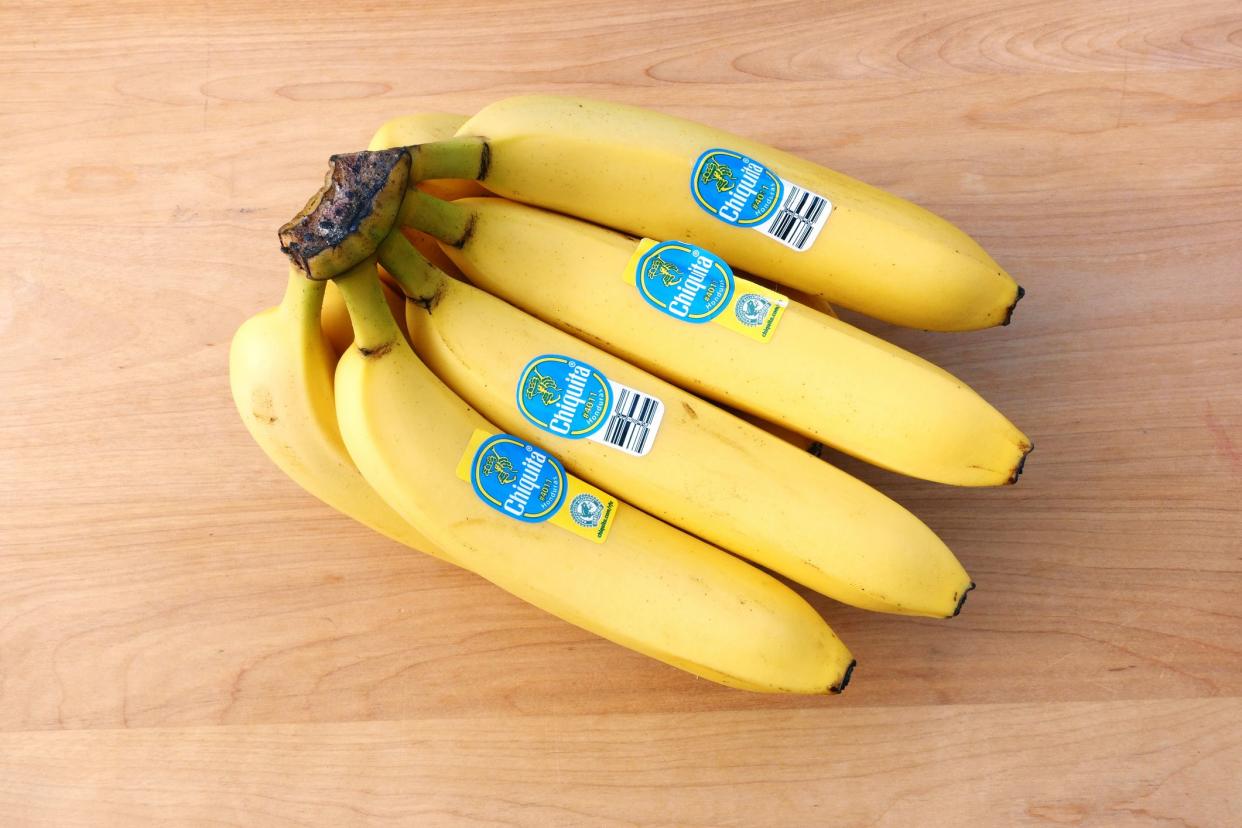
“Yes, We Have No Bananas” was an American novelty song from the 1920s, written by Frank Silver and Irving Cohn. The banana was also popularized in song (commercially) by the famed Chiquita Banana, an advertising jingle classic for the international brand. Its depiction of “The Chiquita Banana” featured a “dressed-up” banana for decades, as originally drawn in 1944 by Dik Browne. In 1987, the image was transformed to a woman by artist Oscar Grillo.
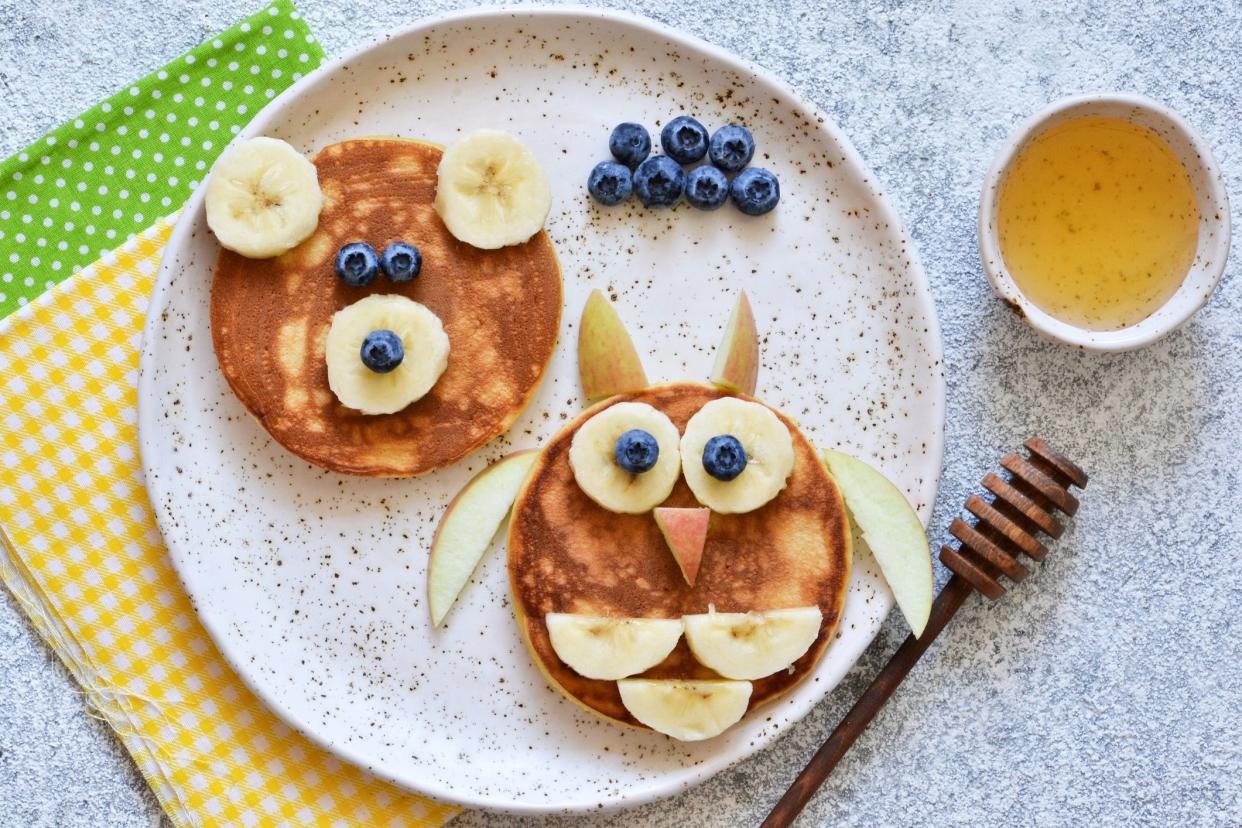
The banana has been featured in fine art, from the traditional (“The Meal” by Paul Gaugin or “The Uncertainty of the Poet” by Giorgio de Chirico) to pop-culture interpretations such as the Andy Warhol-created artwork used on the album cover for the debut album by the Velvet Underground & Nico. Then came the 2019 “work” at Art Basel Miami, when the Italian artist Maurizio Cattelan used duct tape to place a real banana on the wall, also placing a price tag of some $120,000 on the piece.

Bananas have long been used to deliver messages, from inspiring words in a kid’s school lunch to a love note to your spouse. Use a marker with edible ink for the safest way. Using a toothpick or fingernail creates a “secret” message that becomes visible as the banana ripens.

If all this banana talk has you craving even more, then put The International Banana Museum in Mecca, California, on your “to-do” list. Currently closed due to COVID-19 concerns, the destination’s website still serves to whet the appetite for future visits. After all, it’s not every museum that can boast some 25,000 banana-related items and pictures. And, it seems, the creator loves a pun maybe even more than bananas: “After your eyes have ‘split’ over our ‘appeeling’ atmosphere, stop by our banana bar, and order a ‘bunch’ of tasty treats like our ‘home-made’ banana ice cream and our delicious banana milkshakes! Then, when the time is ‘ripe,’ dress up in our array of banana-wear and go ‘bananas’ as you take some fun-filled pictures in front of our giant banana statue!”
Related: Circus World and Other Weird Museums Across America and Beyond

Like Cheapism's content? Make sure to follow us here.
